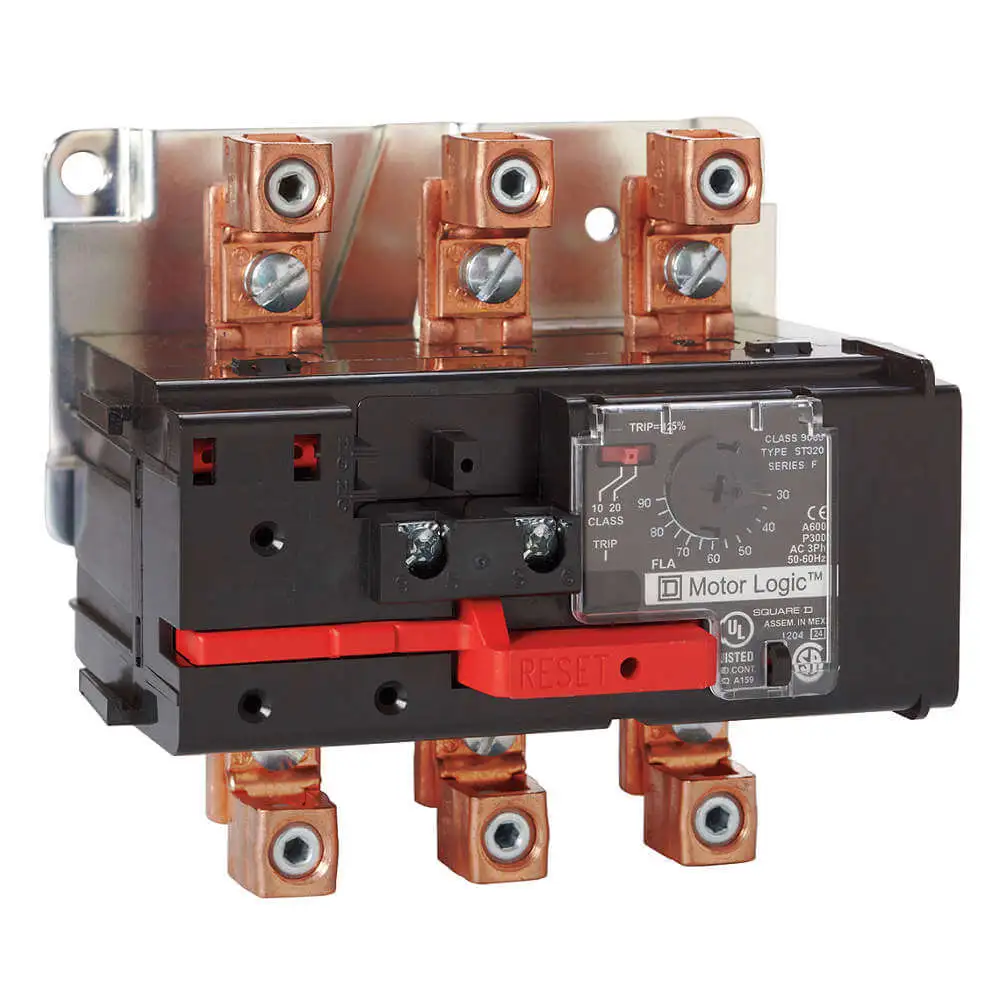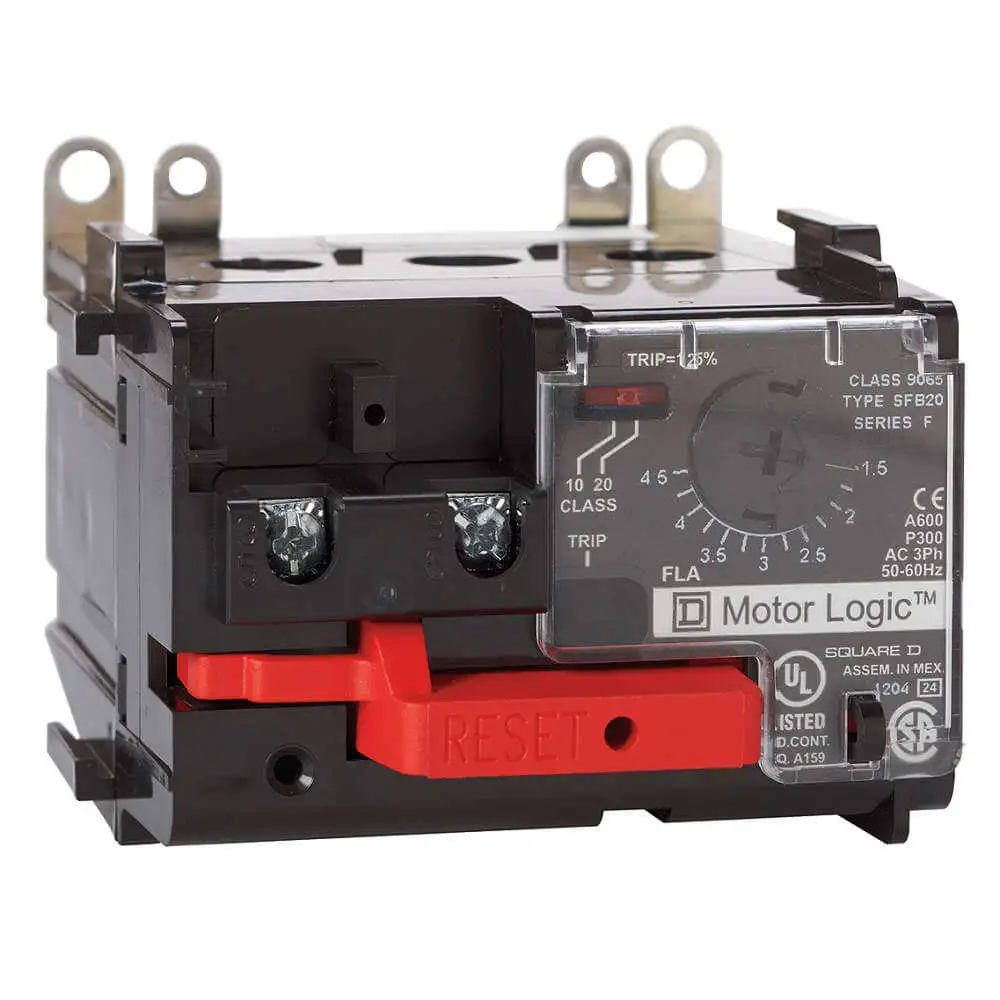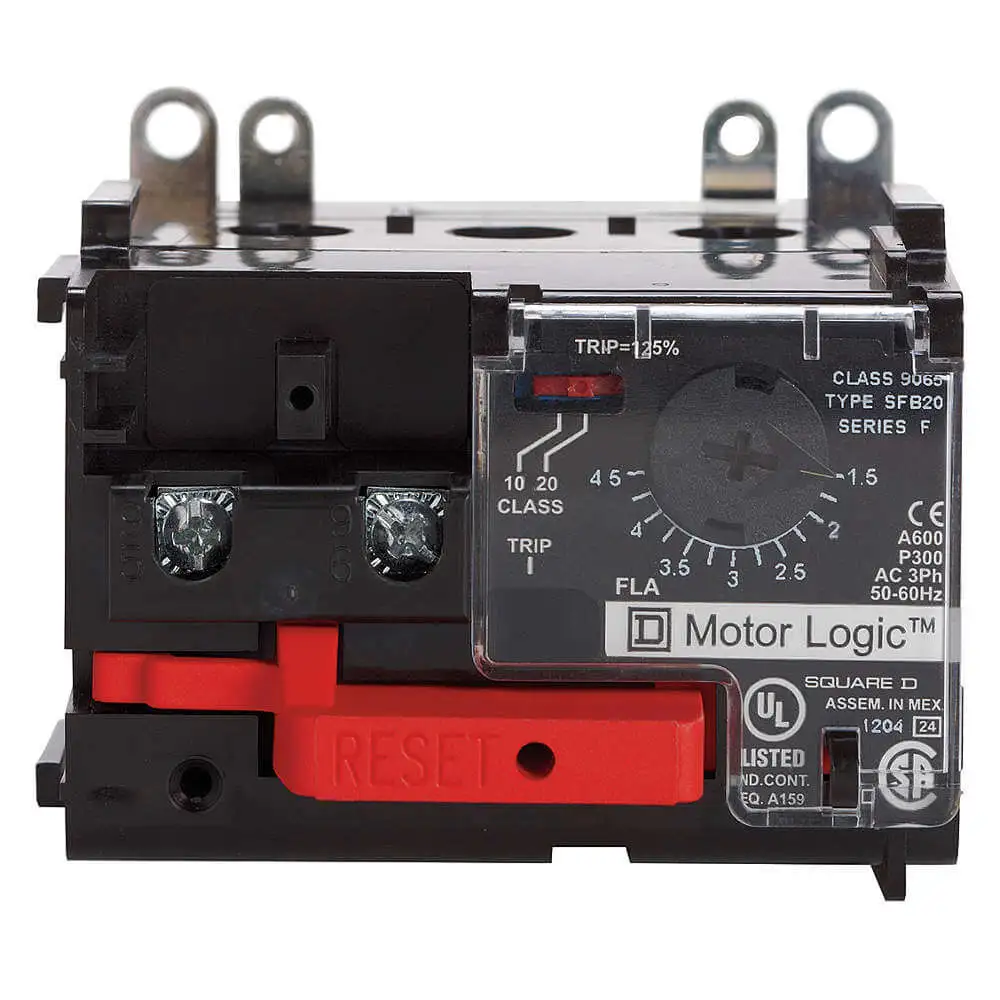Square D 9065SF320 thermal overload relay is used to protect motors from overloading. It monitors the current flowing to a motor and trips to prevent damage. This type of relay is commonly used in construction, mining and manufacturing applications to ensure the longevity and proper functioning of electric motors.
Working Mechanism:
- This solid-state overload relay continuously monitors the electric current flowing to the motor it protects.
- It compares the actual current to the motor's predefined safe operating current range.
- The relay detects an overload condition if the current exceeds the safe range.
- When an overload is detected, the relay immediately sends a trip signal to the motor control circuit.
- When the trip signal is received, the motor control circuit cuts power to the motor, preventing it from continuing to operate under the excessive load.
Frequently Asked Questions:
Q. How can I set the trip current in a thermal overload relay?
A. The trip current is set manually using an adjustable mechanism on the relay, allowing operators to customise the relay's sensitivity to match the specific requirements of the motor or equipment being protected.
Q. What is the difference between a thermal overload relay and an electronic overload relay?
A. A thermal overload relay relies on temperature changes caused by current flow to trigger a trip, while an electronic overload relay uses electronic components to monitor current and trip the relay when predefined limits are exceeded.
Q. Can a thermal overload relay be reset after tripping?
A. Yes, this relay can be reset after it has tripped. However, it is essential to investigate and address the cause of the trip before resetting to avoid repeated issues.
 Change Country
Change Country

 In Stock : 3 Units
In Stock : 3 Units
